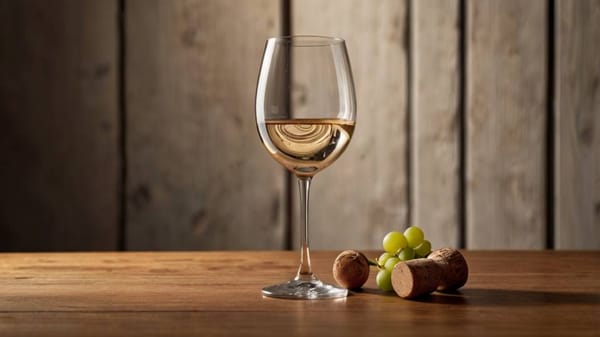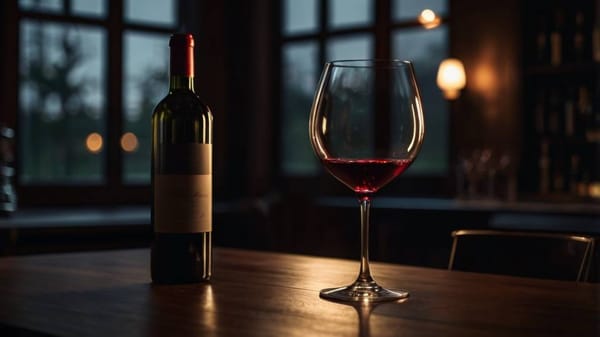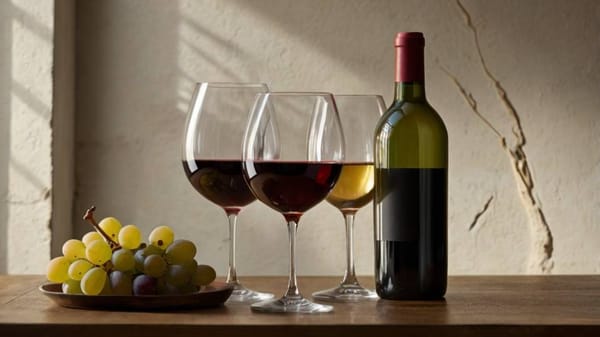The Ideal Glass for Each Wine Type — Made Simple
Discover the best wine glass for every style—from red to rosé—so you can taste better, learn faster, and enjoy wine with confidence.
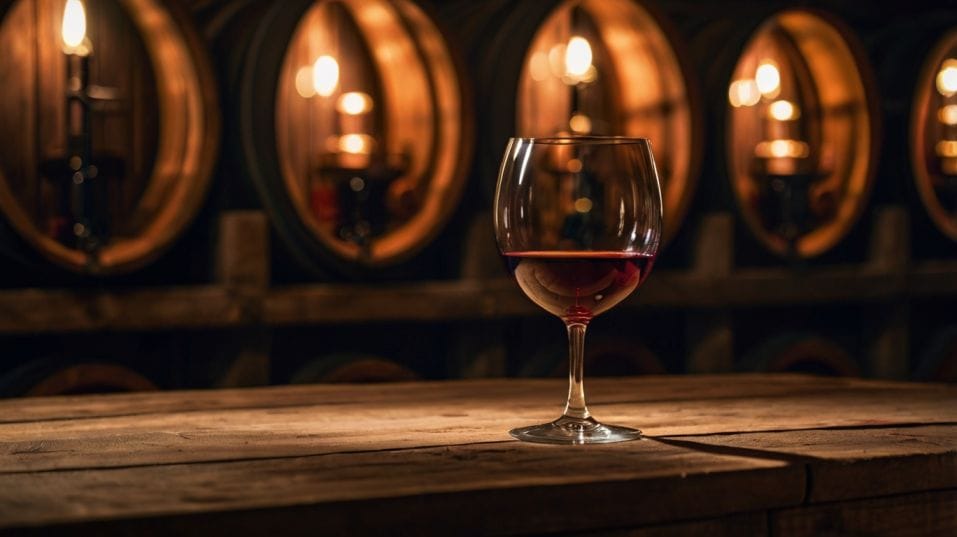
Ever wonder why wine tastes different at home than it did in the tasting room? It might be the glass. The right shape doesn’t just look elegant—it changes how a wine smells, feels, and finishes.
For anyone new to wine, this guide makes it simple. You don’t need a cabinet full of options—just a few smart choices matched to how and what you drink. Let’s make sense of wine glasses, one pour at a time.
Red Wines: Let the Wine Breathe, Stretch, and Speak
Red wines tend to have more structure—think tannin, alcohol, and bold flavors—and that means they need space.
A wider bowl gives reds more surface area to interact with air. That exposure softens harsh edges, lifts aromas, and unlocks subtleties that feel hidden straight from the bottle.
Full-Bodied Reds
For full-bodied reds like Cabernet Sauvignon, Merlot, Syrah/Shiraz, Malbec, or Bordeaux blends, go with a glass that has:
- A large, rounded bowl that allows for deep swirling
- A slightly narrower rim that concentrates aroma toward your nose
- Enough volume that the wine doesn’t feel cramped
This shape allows oxygen to soften the tannins while capturing the complex scents of dark fruit, earth, and spice before they dissipate. The rim placement helps the wine land mid-palate, where the weight and structure feel balanced and satisfying.
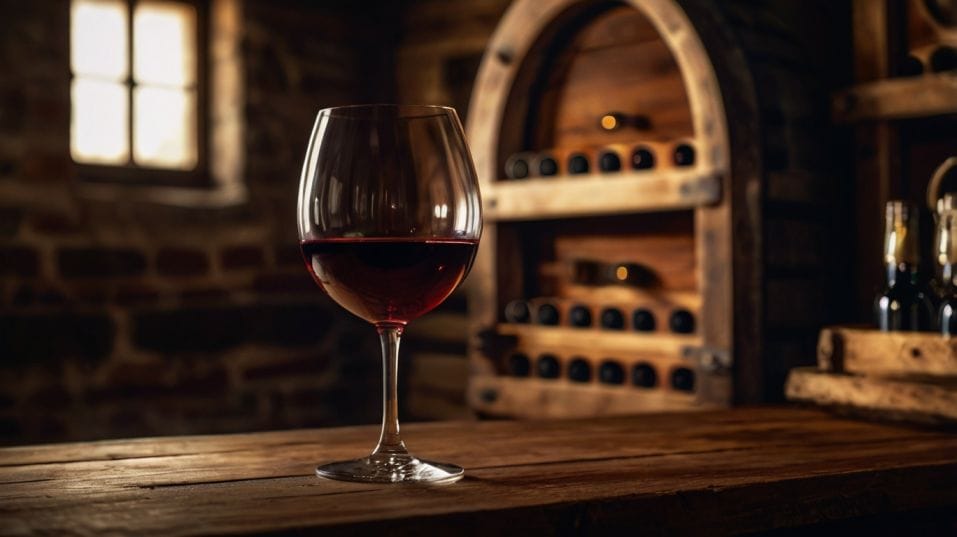
Lighter Reds
For lighter reds—Pinot Noir, Gamay (Beaujolais), or even some cool-climate Grenache—look for a bowl that’s still wide but with a slightly more flared rim.
Why? These wines rely on delicate aromatics—think red cherry, rose petal, dried herbs—and you want those lifted and focused. A larger surface also allows fragile aromas to unfurl gently, rather than getting lost in the air.
Pro tip: If you chill your lighter reds slightly (as many should be), the shape also helps preserve that freshness and keeps the wine tasting nimble rather than flat.
White Wines: Temperature Control, Aromatic Focus
Whites lean more on acidity and freshness, and their ideal glass should enhance both. Since whites are often served chilled, a narrower bowl helps the wine maintain temperature longer.
It also funnels the bright, often fleeting aromas—citrus, stone fruit, mineral notes—straight to your nose.
Crisp Whites
For crisp whites like Sauvignon Blanc, Pinot Grigio, Albariño, or dry Riesling:
- Go for a slim, U-shaped bowl
- Prioritize clarity and focus over size
These shapes highlight a wine’s linear profile. You’ll taste cleaner acidity, feel a crisper texture, and catch more subtle notes like wet stone, lemon zest, or green herbs.
The smaller opening also keeps volatile aromas (which tend to escape quickly) in check.
Fuller-Bodied Whites
For fuller-bodied whites like Chardonnay (especially oaked), Viognier, or white Rhône blends, a slightly broader bowl makes a difference:
- More air contact allows richer flavors—vanilla, hazelnut, ripe apple—to develop
- You can swirl the wine gently, awakening texture and complexity
In these wines, you’re often tasting more than just fruit—there’s body, spice, and possibly oak influence. A glass that gives the wine space brings out the structure that separates “round and creamy” from just “soft.”
Sparkling Wines: Preserve the Bubbles, Unlock the Depth
The flute may be traditional, but it’s not ideal. Yes, it shows off bubbles beautifully—but it suppresses aroma and limits texture. Most sparkling wines are more expressive than their bubbles alone.
Tulip vs. Flute
For Champagne, Cava, Crémant, Prosecco, or sparkling rosé, upgrade to a tulip-shaped glass or a white wine glass with a gentle taper:
- The inward curve at the top holds carbonation while letting aromas develop
- A wider bowl reveals more complexity—brioche, apple skin, almond, sea spray
This matters most with higher-quality sparklers or vintage expressions where nuance is the point.
With a better glass, you can taste both freshness and depth—the balance of fruit, acid, yeast, and mineral—without needing to top up the glass every few sips.
Bonus: The tulip shape also makes pouring and sipping feel more intentional, more ceremonial. And that matters.
Rosé: Not Just a Summer Afterthought
Rosé wines straddle the gap between white and red. The ideal glass captures their fresh, fruit-driven personality while still offering enough room for texture and structure—especially if you're drinking more complex, age-worthy rosés.
Shape for Expression
A slightly flared bowl works beautifully:
- It directs the wine to the tip of your tongue, where fruit sweetness is most perceptible
- The bowl allows a little swirling, helpful for savory or herbaceous rosés
This glass type brings out notes of wild strawberry, watermelon rind, or even saline minerality. It also highlights rosé’s versatility—something you’ll notice more clearly once you stop pouring it into random stemware.
Fortified and Dessert Wines: Intensity in a Small Frame
These wines pack more aroma, sweetness, and alcohol into each sip—so the glass should help you savor, not overwhelm.
Small But Precise
For Port, Sherry, Madeira, Sauternes, or Tokaji:
- Use a smaller, tulip-style glass with a tight rim
- This shape concentrates powerful aromas while controlling evaporation
You’ll taste oxidative complexity, dried fruits, caramel, spice, or even smoke—depending on the style. More importantly, you’ll pace yourself.
These aren’t wines to gulp, and the right glass encourages that sense of slow enjoyment. The wine stays cooler, the flavors stay focused, and each sip feels like a story unfolding.
What About Universal Glasses?
There are some well-designed, all-purpose glasses that strike a balance—large enough for reds, narrow enough for whites, and shaped to accommodate bubbles in a pinch.
If you’re just starting out or don’t want a shelf full of stemware, a well-crafted universal glass is a smart way to begin.
The key: choose one with a clear bowl (not colored or etched), a fine rim (for a smoother mouthfeel), and enough volume to swirl a modest pour without sloshing.
Quality matters here—not for prestige, but because thin, well-balanced glassware actually changes the way a wine lands on your palate.
Final Thoughts: Taste With Purpose
Glassware doesn’t have to be complicated, but it should be intentional. When you match the glass to the wine, you give it the best possible stage to perform.
Tannins soften. Aromas bloom. Texture comes alive. And your palate starts noticing things you couldn’t before.
Start with a few core shapes. Practice switching glasses with the same wine—you’ll feel the difference. Then build your ritual around clarity, not clutter.
Tonight, try pouring your favorite wine into two different glasses. Taste slowly. Compare. Notice what changes.
That’s how your wine education deepens—not through hype or jargon, but through direct experience. One thoughtful sip at a time.


